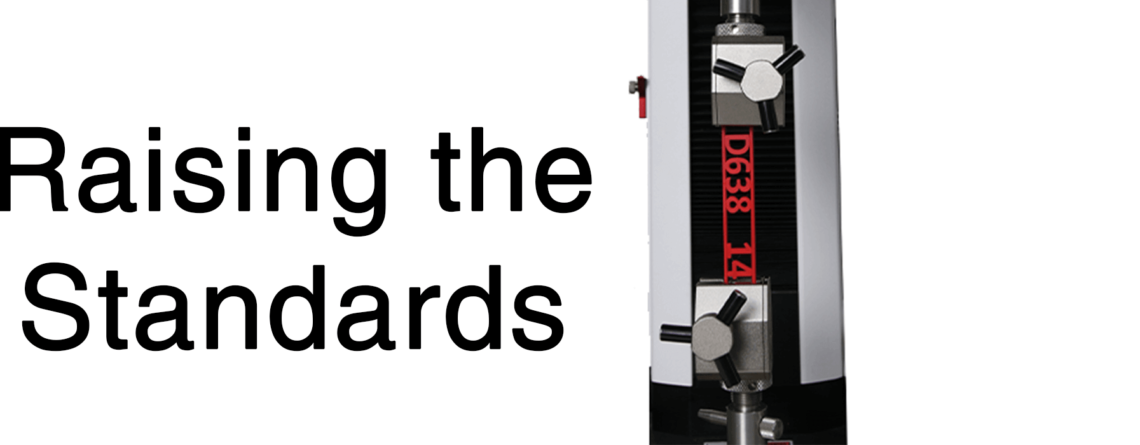Raising the Standards: Flex and Tensile Testing
Amit Pal2023-05-12T09:34:48-05:00To better support the industry, ARL has launched the first in a series of tests as part of our “Raising the Standards” initiative. Our hope is to harness the unique solutions additive manufacturing promises and raise the expectation of certainty and reliability to the levels of traditional manufacturing. To celebrate this new initiative, we’ll be announcing a new test standard every few weeks along with explanations for their usage.
One of this month’s featured tests is the Tensile Properties of Plastics, ASTM D638-14. Using this test, a material’s tensile strength is determined by creating a stress over strain curve to determine ultimate strength at the material’s break point. If your product serves any purpose beyond being a non-functional display piece, tensile testing is an absolute must.
A material’s tensile properties take on added importance in the additive manufacturing industry, as some tensile values are based on injection molding and can’t be taken at face value. Also, the anisotropic nature of many 3D printing methods (such as FFF) makes tensile testing along all major axes an imperative task before finalizing your products’ design and print orientation.
Tensile testing’s importance goes beyond the materials testing and design phase, however. Continuous testing should be incorporated into a regular quality control routine with a cadence determined either by usage, time, or by a material’s lot number. A number of factors can contribute to unexpected changes in material properties over time, including but not limited to, the amount of reground or recycled plastic found in the mix.
Our other featured test is the Flexural Properties of Unreinforced and Reinforced Plastics, ASTM D790-17. Using the ASTM-defined testing process, a material’s ductility, bend strength, fracture strength and fracture resistance are calculated by “utilizing a three-point loading system to apply a load to a simply supported beam.”
With many benefits similar to tensile testing, flex testing also provides valuable insight into how a material’s load-bearing capabilities are affected by the entire breadth of the additive manufacturing process. Oftentimes, slight tweaks in post-processing such as curing can lead to measurable changes in a material’s properties. Flex testing takes on additional importance when it comes to mixed material usage. Not only does the mix of materials affect materials properties, but also how the materials are mixed. A great example of this is the difference between Markforged’s carbon fiber filament and its competitors. Since Markforged’s filament contains uninterrupted carbon fiber threads as opposed to fragments of carbon fiber, its flex properties are markedly different from its analogs.
Learn more about how ARL is raising the standards for the additive manufacturing industry, including our hardness testing standards.






